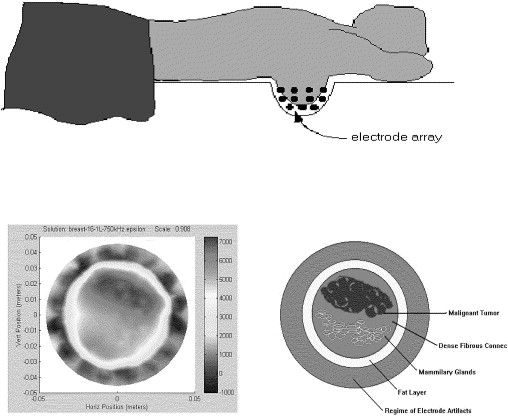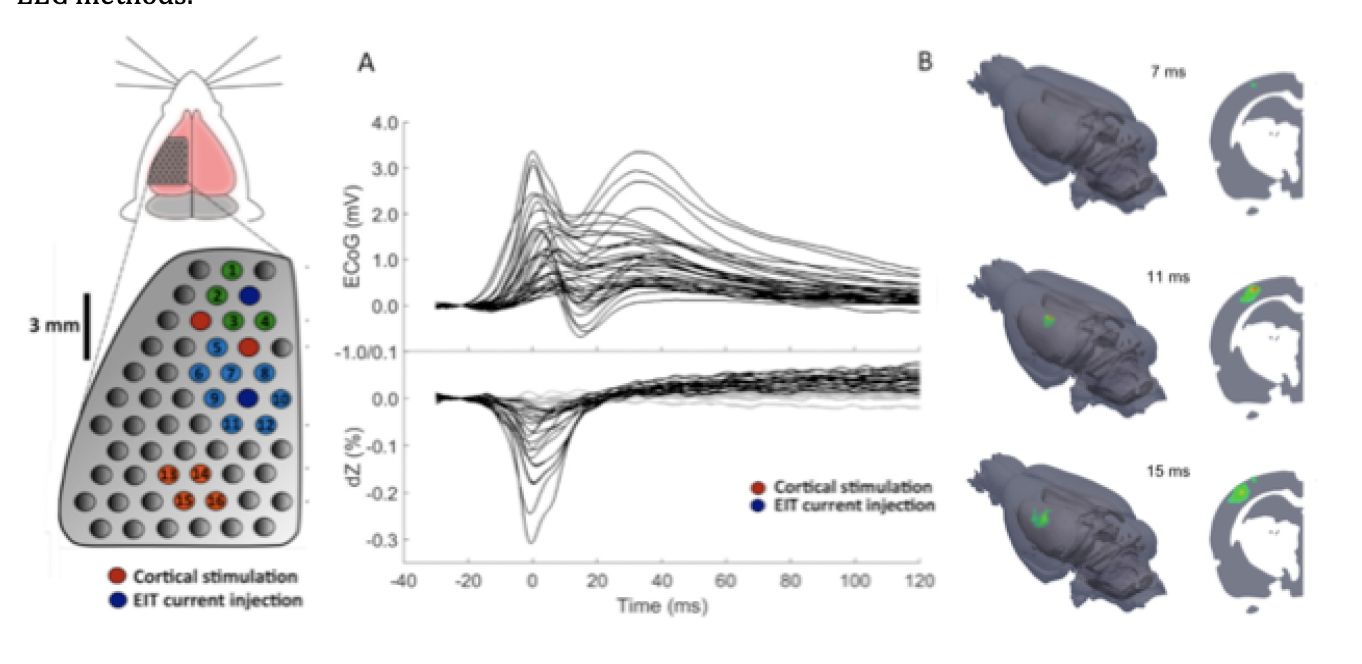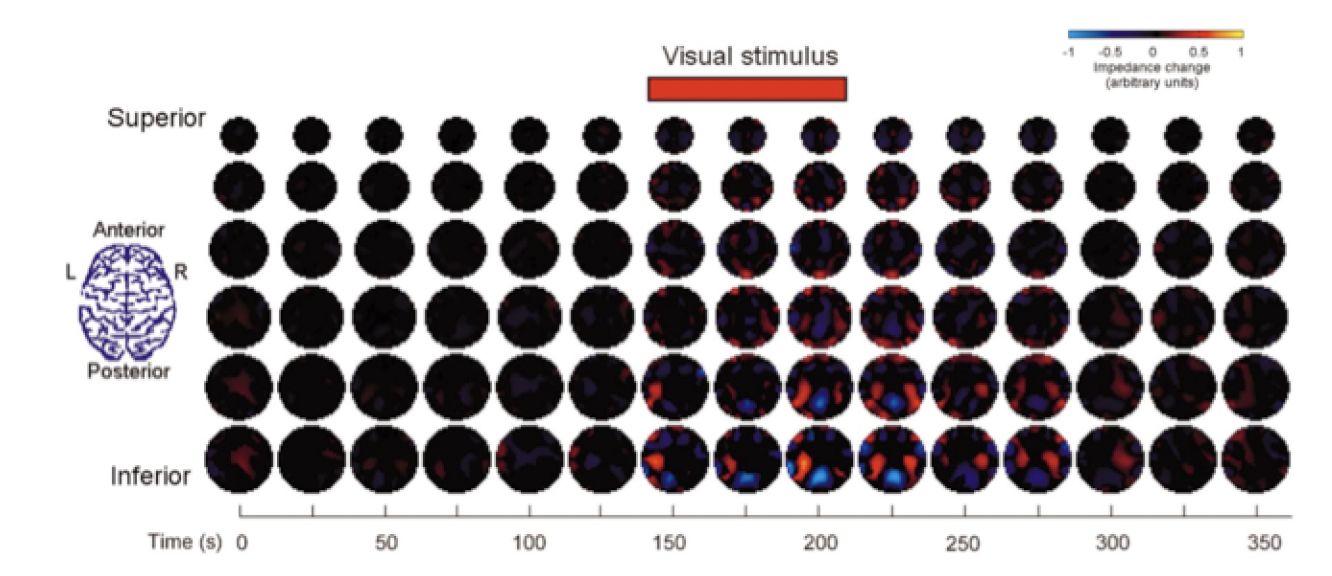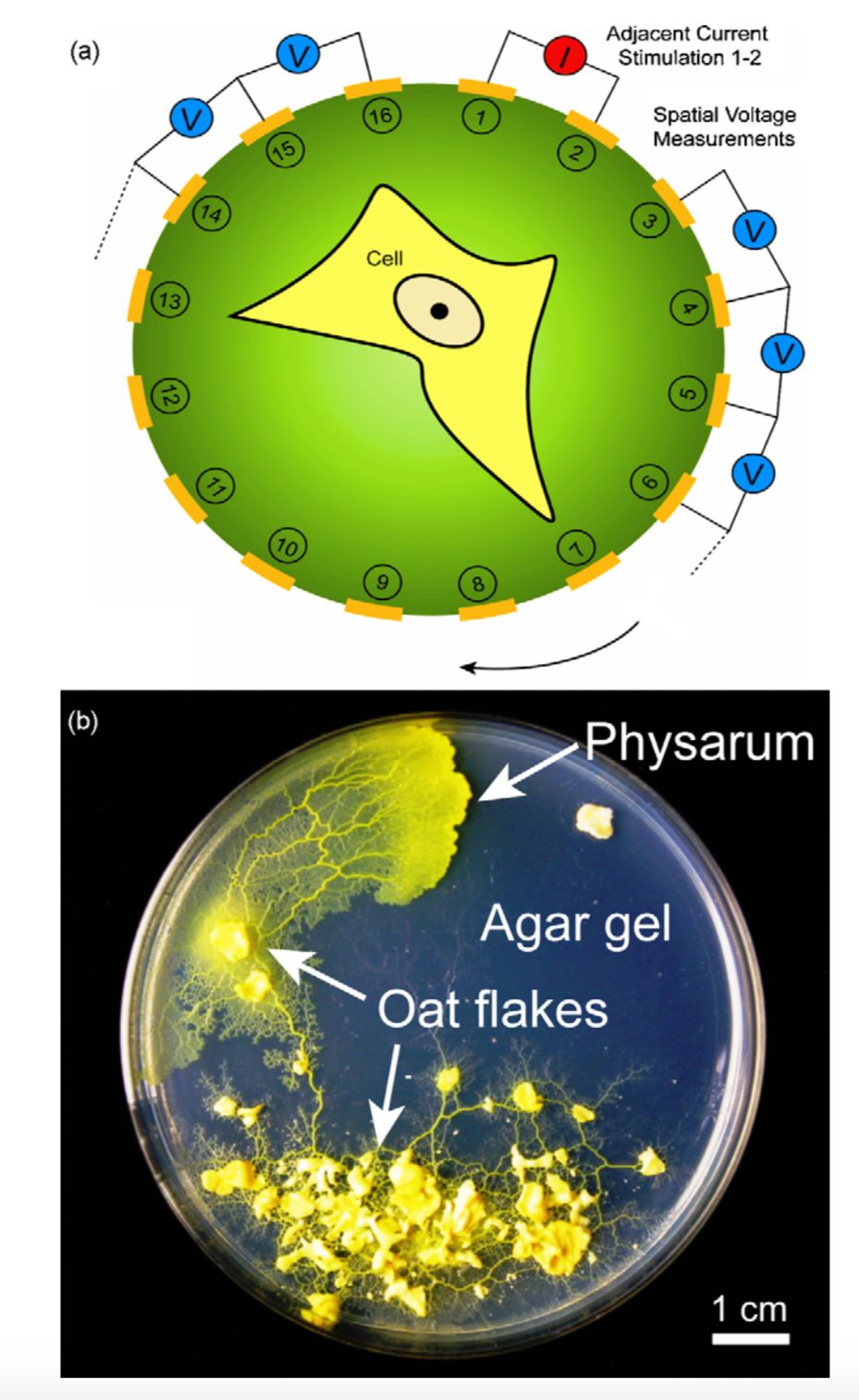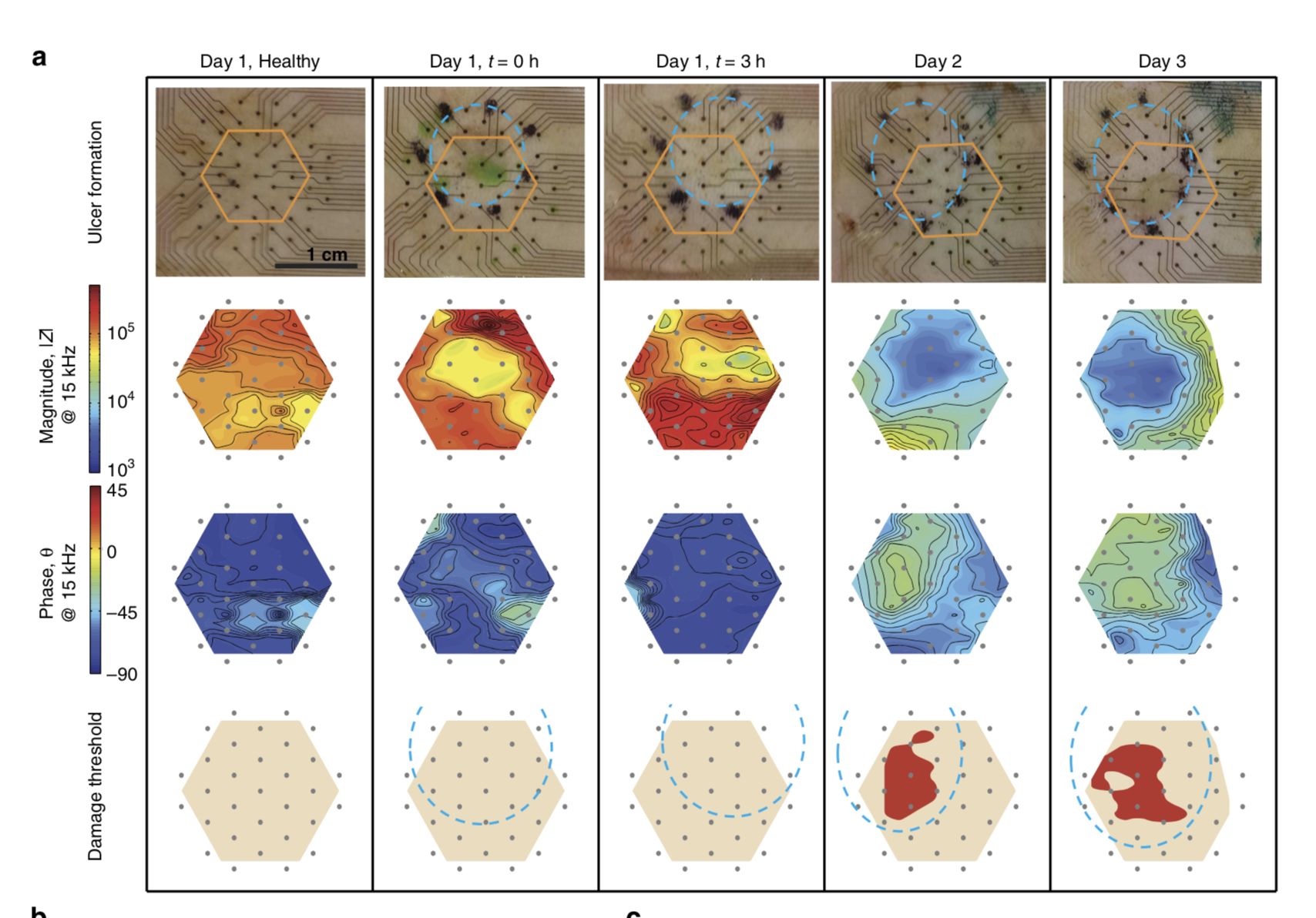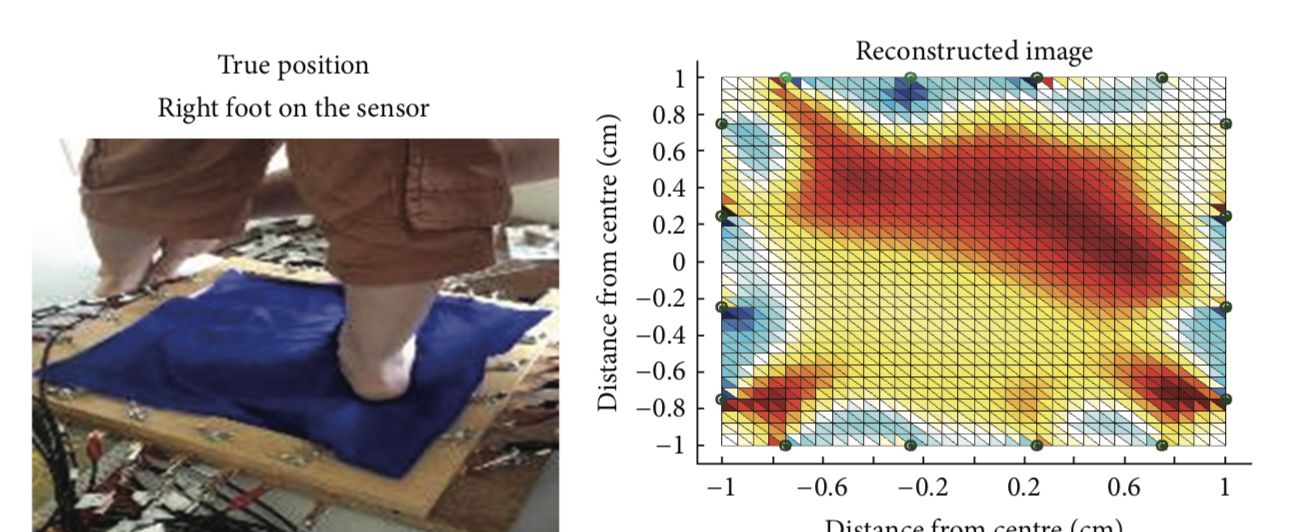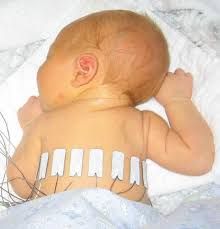Project update 4 of 15
Applications in Research
In this post, we describe some exciting applications that have arisen from research in both electrical impedance tomography (EIT) and bioimpedance spectroscopy (BIS).
Gestural Control
Since Spectra can image cross-sections of limbs, it’s perfect for experimenting with using gestural control for new types of human-computer interfaces (HCI). Emerging HCI technologies have the potential to change how everyone uses computers, but promise to have an especially big impact for those who struggle with prosthetic limb control.
Traditionally, electromyography (EMG) has been used for controlling prosthetic limbs, but EIT yields more information, as EIT obtains both spatial information and dielectric information about tissues, which is not available in EMG. EIT could also be used as the basis for a new type of computer input based on micro-movements of muscles in a limb.
Carnegie Mellon Univerisity researchers Yang Zhang, Chris Harrison, and others have been doing exactly that with Tomo, a wearable, low-cost electrical impedance tomography device for hand gesture recognition:
Tumor Detection
MRI’s are currently the best method to detect tumors in breasts, but they are rarely used in routine check ups because taking and interpreting even a single scan is very expensive. EIT may help fill this gap - there has been a lot of promising work using EIT to detect breast cancer.
It doesn’t have to stop at breast cancer either, and there are other published works looking at other tumors in soft tissue areas of the body.
Brain Imaging
Electroencephalography (EEG) has good time resolution, but poor spatial resolution. MRI has good spatial resolution but terrible time resolution. How do we possibly describe the complexity of the brain unless we can simultaneously acquire both high time resolution and high space resolution? We certainly need new sensor modalities here, and EIT has shown some promise as a tool that can give more data than EEG.
Recent advances in fast neural EIT have enabled fast electrical activity or spiking of cell membranes to be measured without the use of patch clamp electrophysiology, using an EIT electro cortical array in rats. Cell membrane impedances change when potassium gates open, enabling the impedance measurement to describe the cell activity as long as the time resolution is sufficient. When a neuron generates an action potential or is about to be depolarized, resistance of its membrane will be reduced by a factor of 80. Whenever this happens in a larger numbers of neurons, resistivity changes of about 0.06–1.7% from baseline will result. These changes in resistivity provide a means of detecting coherent neuronal activity across larger numbers of neurons and hence the tomographic imaging of neural brain activity. Below is a picture of those resistivity changes in a rat wearing an ECoG array and here is a link to the paper.
In the picture below we show some initial findings using EIT in a similar manner to EEG, where direct corelation is seen with event-related potentials. Wouldn’t it be great to have a tool that’s even better than EEG?

Cell Analysis
You can use EIT and multifrequency EIT to gauge the health and type of cells present in a medium. This system would provide a non-invasive lab-on-a-chip technology for spatially mapping the electrical properties of single cells, which would be significant and useful for diagnostic and clinical applications.
The top half of the above image shows the principle of electrical impedance tomography (EIT) for imaging a single cultured cell in a circular electrode pattern. The photograph below that shows Physarum polycephalum cultured (fed with oat flakes) on the surface of agar gel.
Wound Healing
Some initial research on pressure ulcers (bed sores) led to interesting work on smart bandages. It was shown that you can detect when damage is occuring before any visual signs manifest, just from changes in the dielectric spectrum.
Smart bandages could detect how well you are healing, when an infection occurs, or if a hemmorage occurs soon after surgery.
Pressure Sensor Tool
EIT can also sense pressure. A matrix of electrodes can image the pressure distribution over a surface, e.g., how you hold a baseball bat, or how you distribute your weight across your foot as you take a step. This could be great for people who are diabetic who get pressure sores on their feet.
Lung Imaging in Infants
Lung imaging EIT is already used clinically for continuous monitoring of patients with lung problems. One hot area of research is for premature infants who cannot go in CATSCANs due to radiation, or MRI’s as that would require sedation. EIT is uniquely able to safely scan one of their more underveloped areas - their lungs. There is a research collaboration in Europe currently working on this excellent and practical application imaging the lungs of neonates.
Developing World Applications in Pneumonia.
Two thirds of the world currently has no access to medical imaging at all, so to have any access at all would be life changing for them. One such problem EIT could help with is pneumonia or pulmonary edema detection. Unfortunately, there is very little funding to pursue such applications. A better approach is to make the technology available for people to help themselves.
Other Industrial Applications
There are many more applications, including oil deposit monitoring, industrial pressure sensors, and mapping variations in battery chemistry.
Webinar Reminder
One more reminder that we are hosting a live webinar on the 25th of April (our talk at the Red Vic appears fully booked) which will include a talk, a demo showing Spectra in action, and a question-and-answer session. Of course, you don’t need to wait for the webinar to ask a question!






